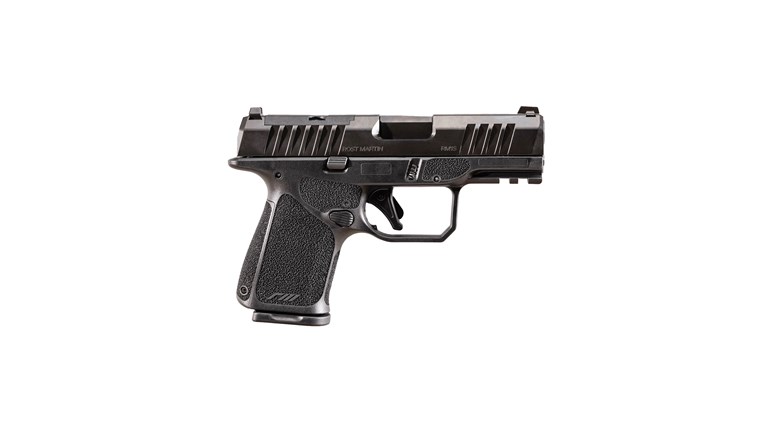
If you’ve read any of my previous work, you know that I am a lifelong hunter and shooter. I am also a practicing psychologist and counselor. I am very passionate about both. Hunting and shooting is a way of life without which I would be incomplete. Psychology gives me great purpose in that I can help others. I spent much of my career working with abused children and watching them recover their hope and happiness. These two worlds have long been divided. It has been difficult for me to check one of my passions at the door to participate in the other. After attending the 2022 SHOT Show, I learned that I may not have to keep the two worlds separate for much longer.
Gun owners have long mistrusted healthcare because they fear its leadership is working in favor of more policy and restriction of guns and our rights. Healthcare workers have long battled with the misuse of guns and what to do to stop violence, self-harm and accidents. I have often cleared rooms by announcing to gun owners that I’m a psychologist, or by announcing to psychologists that I’m a gun owner. The bright side is that I don’t have to share my lunch with those folks. However, the great disappointment is knowing that nothing will change the violence and suicide rates until both sides come together.
It’s frustrating to hear healthcare workers tell me that the solution is to get rid of guns. Guns are tools that humans use. I do not believe the gun is the problem; guns are here to stay. I get equally frustrated when gun owners tell me that the solution is more mental health care. We all have mental health, and people who struggle with their health are usually not the problem. The problem with suicide and violence exists in our society and community, not necessarily in mental health alone. We have to look at the whole picture including physical, mental and social health.
I am encouraged to have found others who also want to make a positive difference, and who understand that coming together is our best option. We understand that more laws and policies are not the answer. There has to be another solution. Some of the folks I met at SHOT are working hard to bridge the gaps and make a difference.
Joe Bartozzi, CEO of the National Shooting Sports Foundation (NSSF), is passionate and outspoken about efforts to reduce suicide rates. The NSSF has long partnered with the American Foundation for Suicide Prevention and the Department of Veteran’s Affairs. NSSF’s Project ChildSafe works to educate millions on the safe storage of firearms when not in use. Bartozzi’s passion comes from being a father of two veterans, and having learned that suicide is preventable. “We are fully engaged and committed to this initiative,” he said. His advice is that we have to establish trust. “If you are going to speak to gun owners about so difficult a topic, you had better have the credibility to do so.” Bartozzi and I agree that many health professionals can alienate the very ones they are trying to help by not being culturally competent about gun owners’ perspectives. Bartozzi says his goal is “… to find meaningful ways to ensure safe and secure storage of firearms when not in use, while steadfastly and absolutely defending the right of every law-abiding citizen to own firearms.”
Christopher Barsotti, M.D., co-founder and program director of AFFIRM (American Foundation for Firearm Injury Reduction in Medicine), says they are bridging the divide between stakeholders including medical and public health officials, firearm experts and law enforcement. “Our interests at AFFIRM are exclusively health and the prevention of harm … There are many voluntary health solutions that are far more effective at reducing risk—and much less complicated, stigmatizing and punitive than policy.”
Barsotti acknowledges that policy/lawmaking has not been effective. “We must unify the traditions and knowledge of responsible firearm ownership that have long existed within the firearm community with the expertise and risk reduction methods that exist within the health professions,” he said. “We need to bring interdisciplinary professionals, health systems and the populations we serve together to understand the problem as it exists in our unique communities and recognize the many resources that already exist to address the health factors that contribute to—or protect from—gun misuse, injury and related harms.”
Ryan Price, senior manager for Project 2025 at American Foundation for Suicide Prevention (AFSP), leads a nationwide initiative to reduce the annual rate of suicide in the United States 20 percent by 2025. They have been working with range, retail and broader firearms-owning communities on how to spot suicide risk, and know what steps they can take to save lives. They predict that if half the people who purchase firearms are exposed to suicide prevention education, 9,500 lives could be saved through 2025.
Overwatch Project’s Casey Woods has been working with American veterans through a peer-based program. Go to overwatchproject.org (advanced guard enlistment) to learn about the program and take the pledge to reach out to a buddy who is in crisis and help him with protective measures, which might include holding on to his guns until he is doing better. For this, you can get a free T-shirt and feel much better about doing something for others.
Michael Sodini of Walk the Talk America is working on bridging the gap between mental health and responsible firearm ownership, working to prevent suicides by firearms. One method is providing informational flyers and increasing access to mental health resources. They also are bridging the gap between the gun culture community and mental health professionals. Of note are its cultural competency classes, which help mental health professionals improve their understanding of firearms culture.
FFL Consultant John Clark is working in conjunction with NSSF and AFSP to deliver training to FFLs on how to decrease risks with suicide. He is an avid supporter of the concept of asking and caring about customers so that risks are minimized and suicides are decreased. He trains others on what to do before and after a tragic occurrence.
It was truly liberating for me to find likeminded peers at SHOT—healthcare providers and prevention advocates that also truly understand the importance of gun ownership. I agree with Christopher Barsotti’s assessment of SHOT 2022, that there was an “enthusiastic affirmation” that the SHOT community appreciates the value of firearms and gun owners’ rights, while also being passionate about reducing the risk of firearm misuse and injury. Everyone wants to safeguard the lives of their loved ones. Ironically, that is often the purpose behind firearm ownership. Inclusive health education will enable everyone to help prevent firearm injuries.
I encourage you to find those healthcare professionals who also understand gun ownership, and let them know there is now a community in which we all belong. Likeminded, passionate and compassionate individuals do exist, seeing beyond the policy debates, and saving lives without losing any of our rights or culture. We can work together to protect our rights and each other.
About the Author: Samantha Mann, MA, is a WV Licensed Psychologist, Licensed Professional Counselor WV, and Nationally Certified Counselor.















































